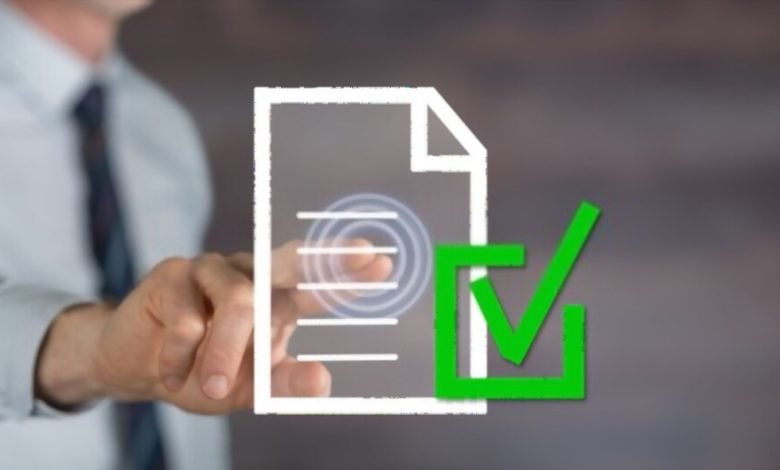Documents for KYC Verification

Knowing your customer is one of the most important aspects of any business. Especially, when it comes to financial safety and security, the need for KYC (Know Your Customer) is even more. This article discusses the documents for KYC verification and what are the benefits and drawbacks of two main types of KYC i.e Physical and eKYC (Digital KYC).
Most Basic List of Documents for KYC Verification
We shall start by enlisting the documents that are used in the KYC process for identification and verification.
Government-issued identity proof
This includes government-issued documents for different purposes. Such as a passport, driver’s license, or national ID card. It ensures that the customer is a registered legal citizen of a country and not an imposter.
Address proof
It includes utility bills, bank statements, rental agreements, and property documents. It provides information about the customer’s true location and that the customer is not forging his residential information. Moreover, it ensures that the person belongs to a non-sanctioned country and jurisdiction.
PAN card
(Permanent Account Number) is for tax purposes and provides information related to the taxable income of a person. It is a verification number that proves a customer is a tax-paying citizen of a country.
Bank Account Details
It includes the IBAN number, IFSC code, Bank Account details, and account statements. Bank account details are required in the KYC process to prove that a customer is not misusing the banking services for money laundering or terrorism funding.
Proof of Income
It provides information through salary slips, tax returns, and Form-16. Basically, it is important to know that person’s income sources are legitimate and involve no illegal activity.
Corporate Documents for KYC Verification
Corporate KYC documents mostly required business-related documents such as registration certificates, partnership deeds, Memorandum of Association, and Articles of Association. These documents are proof that the business is legitimate and involved in no illegal activity such as Money Laundering.
Hybrid Approach and Documents for KYC Verification
Firstly, one needs to be clear about the hybrid approach. KYC is conducted in two main ways:
-
Physical KYC
In this type of KYC, the documents for KYC Verification are submitted physically. It is done by bringing the original documents and or photocopies of the documents to the concerned authority or firm.
-
Digital KYC (eKYC)
As the name suggests, Digital KYC is a newer concept. In this type of KYC, the documents for identity verification are submitted in electronic or digital form. It is mostly done through online means via a laptop or a smartphone these days.
What is the Hybrid Approach?
Since it is not a theoretical concept yet, banks and companies are practicing it. So, we can consider Hybrid Approach as a combination of both Digital and Physical KYC document verification. In this approach documents for KYC verification are submitted in both online and physical form. It depends on the requirements of the organization which documents are to be submitted online and which require physical verification.
KYC Document Verification in Hybrid Approach
Different types of KYC verification processes are involved in a hybrid approach since it’s a combination of both Physical and Digital KYC. Following here is a general list of KYC document verification procedures in the Hybrid Approach:
Video-based verification: A customer submits the documents for KYC verification along with a live video of themselves. The video is analyzed by an AI system for facial recognition, and a human agent verifies the customer’s identity in real time. This video is recorded on a laptop or a smartphone whose camera is of good resolution.
Machine learning-based verification: An AI system uses machine learning algorithms to analyze the authenticity of the ID document submitted by the customer. The system verifies the document’s security features, such as holograms and watermarks, and compares the customer’s photo to the one on the document.
Document scanning and manual review: A customer uploads a scanned copy of their ID document. An AI system scans the document for security features and extracts relevant data such as name, date of birth, and address. A human agent then reviews the extracted data and compares it to the customer’s application. The documents for KYC verification of this type are mostly uploaded in pdf-readable format.
Geolocation-based verification: A customer is asked to provide their current location through their mobile device. An AI system verifies the location and compares it to the address on the ID document submitted by the customer. It is mostly done for proof of address verification.
Social media analysis: An AI system scans the customer’s social media profiles to verify their identity. The system checks for consistency in personal information, photos, and other details across different social media platforms.
Final Thoughts
Documents for KYC verification can be submitted in multiple ways that depend upon the regulatory requirements of the firm. Customers can submit these documents in both physical and digital forms and firms can verify them as per their requirements. Moreover, it is mandatory to have detailed and updated information on KYC requirements. For this purpose, KYC AML Guide can facilitate users, compliance teams, and firms.




